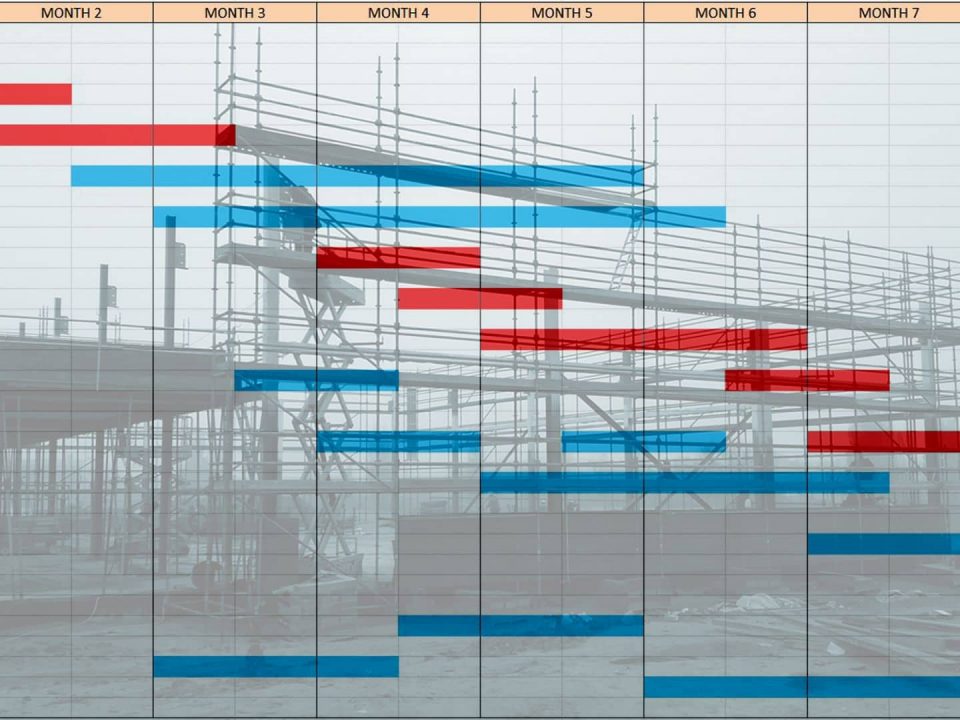Digitalization vs.
The Help Desk Lady
By digitizing the company, you will get rid of unnecessary paperwork, you will get an overview of what is happening in the field, and you will gain time for meaningful work. But in reality, many builders are not very fond of computers and software. And although they suspect that digitization will make their lives easier, they go for the tried-and-tested option – they hire a lady to help. It may work for a while, but it only postpones solving the problem. You will read how digitization is better than part-timers and how to get started with it.
First, let's clarify the terms. You will read about digitization in the text. By this we mean the introduction of modern technologies into the life of the company. But we do not mean complicated systems that cost millions of crowns and you need help from a dozen consultants to set them up.
We are builders ourselves, which is why we look pragmatically at the digitization of the company. When we write about technology, we mean smart but at the same time easy-to-use tools. Applications that even bricklayers on the construction site can control, and yet have the potential to change the company's functioning for the better in a few months.

They won't make you coffee. But otherwise, Stavario is a much better helper than the part-timers in the office.
When you lose track, Mrs. Marie steps in
Perhaps every owner of a construction company gets to the stage where he solves the first and last, but still does not have an overview of what is happening in the company. All too often they find that:
- missing tools or materials,
- the construction diary has been lying in the office for two months without any entry,
- employees cheat on attendance,
- the work stops because someone didn't do something,
- they don't earn orders.
Everything is chaos, the situation is very psychologically demanding and the builder realizes that he should do something. But he doesn't have the time or energy for that.
At such a moment, few people decide on a radical cut. It is quite natural that the builder chooses a solution that has proven itself in the past. When he had a lot of work on the construction site, he hired a person to help him. The extern said the price, put on overalls, grabbed a shovel and did what was needed. So why shouldn't it work in the office too?
So you write an ad or ask your friends, and if you're lucky, Mrs. Marie will appear at your company. You explain to her what you need and she gets to work. He organizes, for example, photos of buildings, checks reports and helps with the preparation of bids. It looks promising, Ms. Marie:
- has experience in administration,
- works a few hours a week called by agreement, so it doesn't cost a lot of money,
- she smiles
- and makes good coffee.
If the temporary worker is handy, you will really be relieved for a while. You take on new orders, start working on operational matters and... soon, unfortunately, you find out again that another piece of tools has disappeared and no one has written anything in the construction log again.
You still don't know what is really happening in the company, and the profit from the order varies in single percentage units. Either you start looking for the next Mrs. Marie, or admit it: I don't solve the causes of chaos, I only extinguish the consequences.
Instead of Mrs. Marie, implement processes and digitize
The cause of problems is usually the absence of processes and tools. And if you have them in the company, then their non-compliance.
Want a practical example? You do not need to determine how, when and to whom the construction manager should report problems when the material does not arrive. If you don't have processes and tools, you're relying on the individual to handle it. If you are lucky with people, the business works. But the more employees you have, the greater the chance that someone will neglect their duties - and unfortunately, not even the conscientious Mrs. Marie will save it.
Mrs. Marie can't even deal with the fact that the construction manager doesn't keep track of attendance properly, and she won't even provide you with a better overview of expenses and income. Systematization and digitization will help you in a growing company. Only this way:
- you get an overview of cashflow, employees, suppliers and tools,
- you get rid of unnecessary paperwork,
- you will know who has to do what
- improve communication with investors,
- you will achieve substitutability in the company and you will be able to go on holiday without stress.
Clarify expectations
First, define what you expect from the change. Ask yourself questions like:
- what i want to achieve
- what I want to solve via computer or mobile phone, and what I definitely don't want to digitize,
- approximately how much money do I want to invest in it,
- what my working day should look like when everything is set up.
Then describe to yourself how you have dealt with the various agendas so far. For example, how did you proceed when agreeing to cooperate with an external supplier? How is material purchased, stored and delivered? How many people are involved in attendance planning?
Don't get bogged down in the details. Describe the crisis points and focus on the situations where you perceive the biggest problems. We know from experience that this is usually the case:
As a business owner, you have the advantage of not having to convince anyone else of the usefulness of digitization. But we recommend that you discuss your intention with someone you trust. At the very least, you will clarify weak points for yourself with such a discussion.
Try it for yourself and don't get overwhelmed by the features
There are many smart tools available in the market. Some are free, others will cost you hundreds of thousands every month. It always depends on the size of the company, the number of licenses, guaranteed support or the robustness of the entire system.
If you opt for fee-based software, you'll usually encounter a model: I pay a fee to get up and running, then I pay regular amounts. Thanks to this, the authors of the software guarantee its functionality, continue to develop it, and you do not have to worry about administration and maintenance. You are a paying user - similar to when you use MS Excel, for example.
When choosing a suitable tool, find out if the authors offer a demo on which you can try the application. In general, it is advantageous when:
- the tool allows you to manage multiple agendas and you don't have to use something different for each problem,
- you don't have to set up thousands of parameters in a complicated way,
- you don't pay for features you don't use,
- you can control the tool from a computer, tablet or mobile phone,
- you can easily explain the operation even to the workers on the construction site.
Focus on the quick wins, quick benefits for the company
After trying the demo, go back to your initial expectations. Do you feel that the tool will help you achieve your desired goals? Will it free your hands and give you a little breather? If so, you are on the right track.
As we mentioned before, digitization is a process. And change doesn't happen overnight. You need to explain the innovation to employees and emphasize the benefits they will get from using it.
Therefore, from the beginning, focus on the digitization of such an agenda, where you will quickly see results. If you decide on Stavario, we recommend starting with a construction diary or attendance. Within a few weeks, you will see how the company changes under your hands and you will start to breathe more freely.





